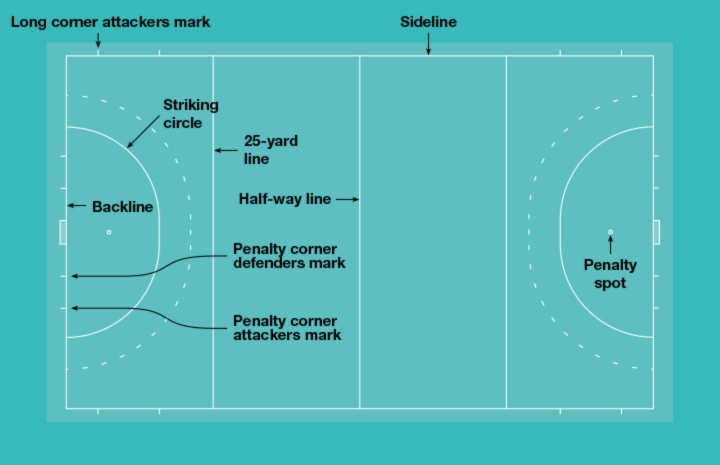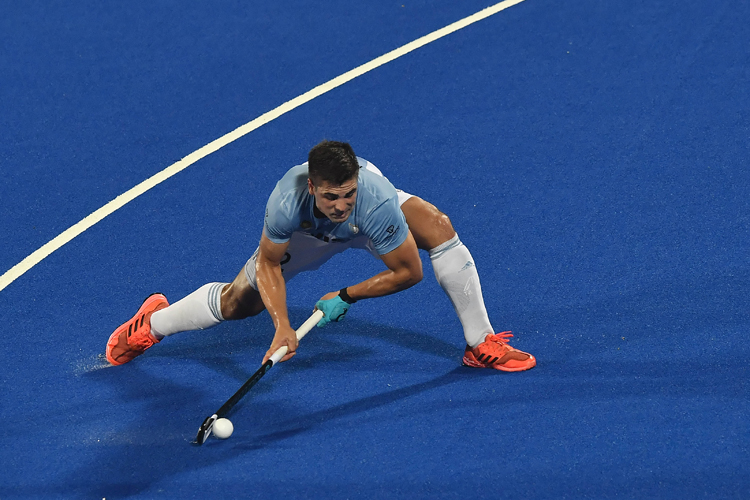
Penalty corner: 2022
Penalty Corner and Hockey
Hockey players know how important the penalty corner is in the game. The methodology of penalty corners is now under review, according to the Federation of International Hockey (FIH).
I’m not keeping in touch with the current hockey scenario, nor am I a hockey player. When I was younger, I was attached to hockey. The year was 1972. The Olympics were going on in Munich (Germany). I was then a student of Kendriya Vidyalaya IIT, Kanpur.



The memory of School days, the Munich Olympics, Mukhbain Singh, and hockey
In those periods, Hockey was India’s only hope of getting a medal at the Olympics. I was in school. I might have been on the 5th or 6th standard. In those times, the Indian hockey lineup featured Mukhbain Singh.
Mukhbain was the vice-captain of the Indian hockey squad. Mukhbain Singh was a penalty corner expert during Olympic hockey. He was a ball of fire once he took the field. I heard the word ‘penalty or penalty corner specialist’ in those periods.
Unfortunately, Mukhbain failed to live up to the expectations against Pakistan in the semifinals. First, he frittered away as many as Eighteen penalty corner opportunities in the semifinals. Then, India fizzled many field goal opportunities and lost to Pakistan with a 0-2 goal.
Though decades had passed, it still brings to mind that India opened the Munich Olympic campaign when the Netherlands held them back to a 1-1 draw. India did well in the rest of the matches and topped their group. The tournament was on a league cum knock-out basis.
In the league’s opening match of another group, Pakistan lost to West Germany but still made it to the semifinals and took on India. Munich Olympic bears out penalty corner experts could turn the match’s fate. The Olympics got me interested in hockey and have pushed up my awareness of hockey.
In 1972, the television service was limited to Delhi and Mumbai. We were at Kanpur. Radio commentary was the sole source of support for us. The Principal school connected the radio commentary to the loudspeaker. So that the teachers and students could enjoy the semifinals between the two arch-rivals of hockey, but it dashed our hopes as India lost the match.
Hockey became famous in our school because of the impact of the Olympics. One of my classmates, whose father was an outstanding hockey player of his time, used to give coaching to the children of our school. I didn’t play, but I watched his training from the side of the field and the perfection they need to use the penalty corner in goal.

Now the question might arise in readers’ minds about the primary purpose of this article. A few days ago, the news came in the media that an amendment was offing in the method of penalty corners for the safety point of view of the defending side while thwarting the goal by penalty corner.
I want to shape my story as informal and not academic. Before going in for the core issue, initially, I reminisced my school days and shared them with readers. So let us now discuss today with the readers what happens to the penalty corner and how the penalty is to hit. Why does the existing method need to change?
i) When a team gets a penalty corner



A team gets penalty corners when a player of the opposite side [the defending side] commits a foul on the attacking side inside the striking circle. More so if the intention is to thwart a potential goal-scoring opportunity. There is still room for a penalty corner when the ball gets caught in the defender’s clothing or equipment inside the penalty circle [Penalty circle: from any point on the goal line not less than 10 yards from the nearest goalpost: Source www. Merriam-webster]

The ball touching the foot of the defensive team player in the striking ring is a common cause of a foul. In addition, if the player on the defensive side commits a foul within 23 square meters of their goal post, the umpire can award a penalty corner to the attacking team. But before making this decision, the umpire has to check to what extent the foul is serious.
Further, suppose the defender had deliberately sent the ball outside the back-line, possibly to avoid a goal, even in that case. In that case, the umpire could award a penalty corner to the attacker.
Operation of penalty corner:
The umpire places the ball on the line ten meters from the goal post in the penalty corner. An attacker, also called an injector, shoots the ball towards the top of the circle.
[Striking circle is a semicircular area in front of each goal post in field hockey. It extends from the goal line to a maximum distance of 15 yards. They must hit the ball from the striking circle to score a goal]. Refer to the drawing above.
The attacking team players can stay on the field but not inside the Dee. The semicircular area around the goal is called Dee. An attacker needs to shoot from within this area to score a goal.
Injector shoots the ball, and another player on the attacking side stops the ball just outside the Dee while a teammate tries to either flick or shoot to score a goal. During the penalty corners, five players, including the goalkeeper of the defensive side, took position along the goal line post.
As the attacking side hits the ball for the goal, these five defensive players leave the goal post line and move forward to resist the goal.
Penalty corner technique

Various types of skills are used to score goals from penalty corners. One of them is the drag-flick genre. In this method, the player raises a shot from the goal line onto the shaft of the hockey stick. They then pushed the ball along the ground. It speeds up the ball towards the goal post.

The necessity for amending the penalty corner method:
But this ‘drag-flickering’ method has raised a question mark about the player’s safety. Often the ball goes up at a high speed. Now, apart from the goalkeeper, the other four players who resist converting a penalty corner into a goal are with no headgear. As a result, they are exposed to Injury to the fast-moving ball. A few days ago, an article in the Indian Express titled ‘Injury raise a question mark over hockey’s showcase set-piece— penalty corner. In the article, Jon Wyatt of the International Hockey Federation (FIH) said that the purpose of their project is to start a debate and raise awareness.
The safety limits of penalty corners nowadays assume a debatable issue on account of drag flicks, when an attacker, in one movement, gathers the ball just outside the Dee, drags into the circle, and flicks it towards the goal. The flicks, released around twelve meters from the goal, can travel up to 150 KMPH. While the goalkeeper wears complete protective gear, it leaves the defenders vulnerable and wildly rushes straight toward the drag-flicker.
Conclusion:
In 2020, FIH’s safety & Health committee conducted a study of 295 international matches. The data reflects the penalty corner accounted for most injuries. The injuries included a blow to the head. And these accidents happen even after using protective gear by defenders. Most injuries occur when defenders try to stop a drag-flick during a penalty corner. According to FIH, the protective equipment gives the player an unnatural sense of safety.
In the last Tokyo Olympics, all teams’ defending sides employed a two-player strike to stop a flicker during the penalty corner. And this strategy helped to guard the half of the goalpost. As a result, the number of goals from the penalty corner was less. Of course, penalty corners are an integral part of hockey. But the mishaps and utility of penalty corners diminished by the current hockey strategy may drive FIH to abolish penalty corners from hockey or make suitable amendments to its operation. It is a question-making round nowadays in the hockey circle if one goes by the recent statement made by Jon Wyatt, the former England captain and now International Hockey Federation (FIH) sports and development director.













































